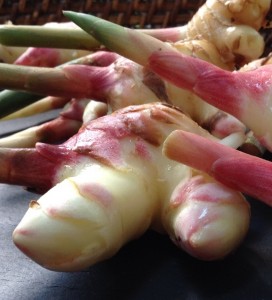 Ginger is one of those lovely plants that likes to sit out in the shade during the summer heat here in the South. In fact, it thrives in the humidity and rich moist soil, showing off some broad beautiful foliage and pretty flowers along with a bit of fragrance. In the last few weeks of summer, along with the last of the tomatoes, peppers and the beginning of early fall greens, the young tender fresh rhizomes show up in all their pink,green and ivory glory. They are almost too beautiful to cut and hardly resemble the dry brown roots you’re most likely to find at the grocery store any time of year. I think I can safely say that once you’ve had some freshly dug ginger root, it will be nearly impossible to go back to the grocery store or pull a jar out of your spice rack.
Ginger is one of those lovely plants that likes to sit out in the shade during the summer heat here in the South. In fact, it thrives in the humidity and rich moist soil, showing off some broad beautiful foliage and pretty flowers along with a bit of fragrance. In the last few weeks of summer, along with the last of the tomatoes, peppers and the beginning of early fall greens, the young tender fresh rhizomes show up in all their pink,green and ivory glory. They are almost too beautiful to cut and hardly resemble the dry brown roots you’re most likely to find at the grocery store any time of year. I think I can safely say that once you’ve had some freshly dug ginger root, it will be nearly impossible to go back to the grocery store or pull a jar out of your spice rack.
A couple of weeks back I made a trip to Western Maryland for a local food event in Garrett County. I would like to say the drive up was beautiful, but it was far from it. Friday traffic and a horrific rain storm made the trip terrible, dangerous and very long. I don’t do well in a car for more than a couple of hours so when we got up over eight, you can imagine that I was fit to be tied. But all was instantly better when the sun came out for the local food festival and I was given maple syrup by not one, but two local sources! Both Savage River Farm and Milroy Farms were quite kind to give me syrup this year. As you probably remember, I was pretty much devastated by the news last year that Maple Creek Farm in Burnsville NC was unable to produce syrup because of warmer winters with climate change. As the southern most organic producer of maple syrup, they were a delight to go visit. The sun shined through that lovely deep golden amber and everything seemed instantly right!
The bright flavor of tender ginger root slices combined with maple syrup from the Southern Appalachian Mountains creates a unique flavor that is different from the typical candied ginger you will find at the store. This stuff I’m going to tell you how to make is spicy deep rich sweet. That ginger from the store has been candied with sugar and there’s no telling if it was beet, cane, or some other kind of sweet product. But just like honey, maple syrup takes on slightly different flavors depending on the mineral content of the soil around the trees, the amount of moisture and age of the tree, along with the number of freezes during the harvest season.
Harvesting maple syrup is no easy task. There are miles of food grade lines strung through the woods up and down the mountain sides (gravity feed is the name of the game when harvesting the raw sap). Tapping the trees year after year so they are not killed requires experience and good eyesight to see scars left from prior taps. There are all sorts of grades of maple syrup from light to dark but my only advice is just find some that you like and get plenty!
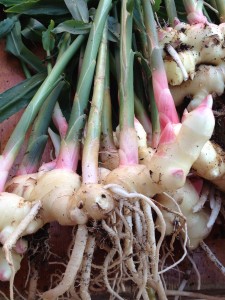 The more you replace conventional sugar with honey, sorghum or maple syrup, the more you will enjoy your family recipes because they each add a little subtle flavor! As an added bonus, if you have heard of vanilla sugar, let me introduce you to ginger infused maple sugar and ginger infused maple syrup with this “recipe”! Try the infused sugar in your fall pumpkin cookies or lattes and the infused maple syrup on winter squash or pumpkin pancakes. There is no end to the possibilities using these homemade products. Younger rhizomes will be less spicy than older ones so your harvest or purchase from the market might vary from year to year or vendor to vendor. If you don’t like the spice of ginger so much, look for the smaller, younger roots or get a mix from a couple of sources each year so the batch is more consistent once the process is complete.
The more you replace conventional sugar with honey, sorghum or maple syrup, the more you will enjoy your family recipes because they each add a little subtle flavor! As an added bonus, if you have heard of vanilla sugar, let me introduce you to ginger infused maple sugar and ginger infused maple syrup with this “recipe”! Try the infused sugar in your fall pumpkin cookies or lattes and the infused maple syrup on winter squash or pumpkin pancakes. There is no end to the possibilities using these homemade products. Younger rhizomes will be less spicy than older ones so your harvest or purchase from the market might vary from year to year or vendor to vendor. If you don’t like the spice of ginger so much, look for the smaller, younger roots or get a mix from a couple of sources each year so the batch is more consistent once the process is complete.
Here’s the method I use after I buy fresh ginger root at the farmers’ market.
- Clean the ginger with a stiff vegetable brush under a slow running stream of cold water. Some of the outer skin will be removed in the process, but so will all of the dirt.
- Then use a towel to dry the ginger and slice it up cross-grain about 1/8 ” thick.
- From this point, the slices get placed into a stainless pot and barely covered with some fresh maple syrup. For twenty minutes they lightly simmer away as the maple syrup begins to thicken. Do not boil these too hard unless you plan to stand and watch them during the process. You can cut the time down, but the slices may end up more firm in the process from the maple syrup actually turning to hard candy. And be careful about spatter because it is notoriously hot and will burn you. The water will be reduced in the maple syrup through the process and the color will deepen to a dark amber color.
- Remove the slices, allowing them to drain in the pot and set on a rack to drip and dry. A dehydrator will work for this process, or air drying if it is not humid.
- When the slices appear mostly dry but still quite pliable, press and roll them in pure maple sugar. Store in a sealed container with additional maple sugar in the refrigerator for up to a year. Pull out slices as you need them in recipes or add to toasted pecans for a surprise ice cream topping. The sugar can be used as a replacement in baked recipes as well.
- Remaining maple syrup and infused sugar should be stored in the refrigerator in sterile jars.

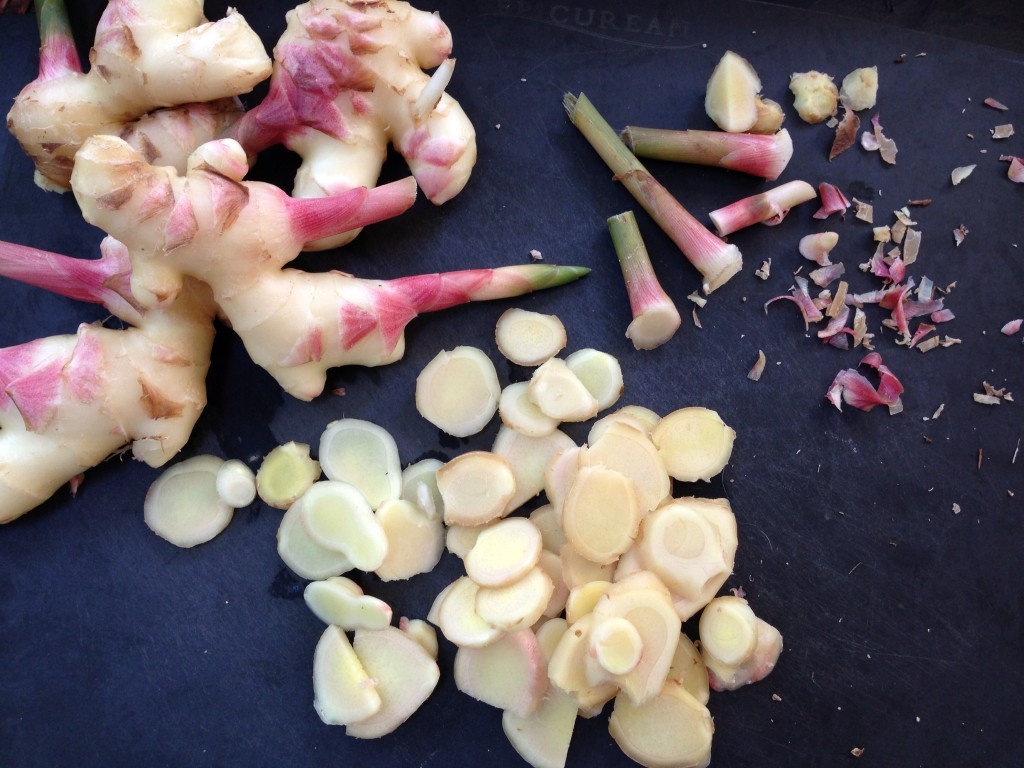
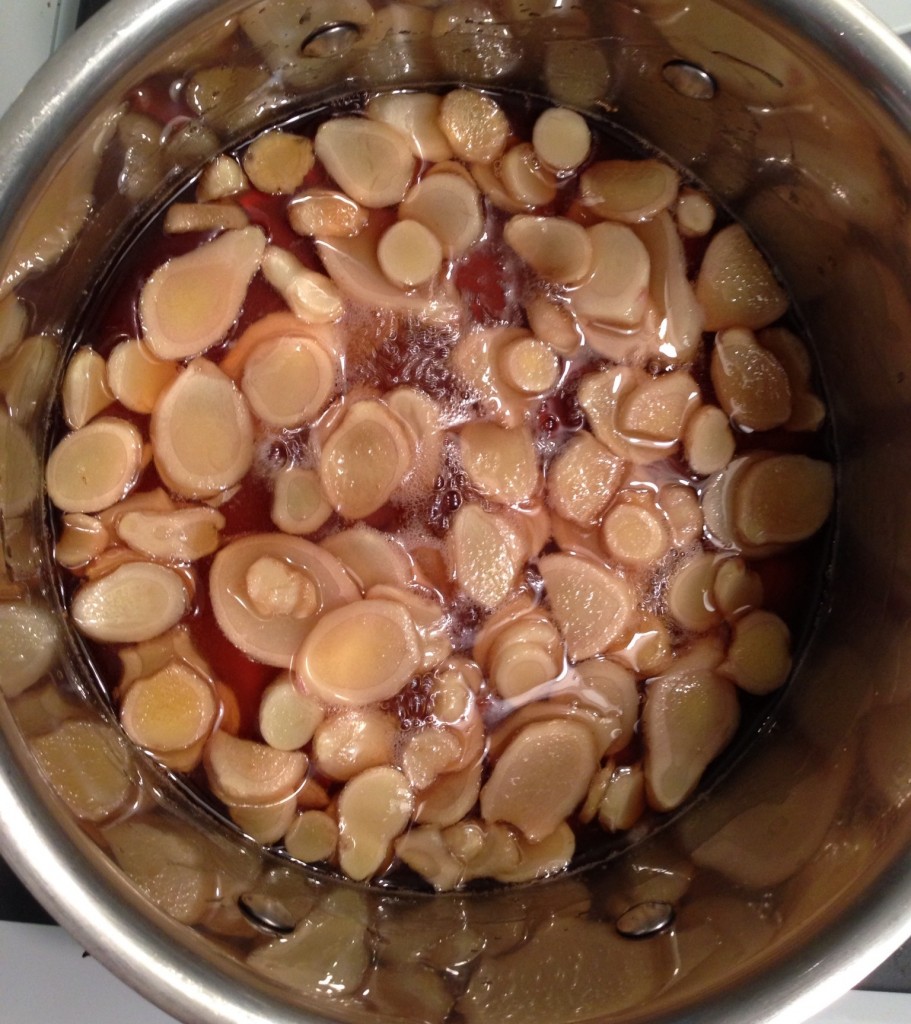
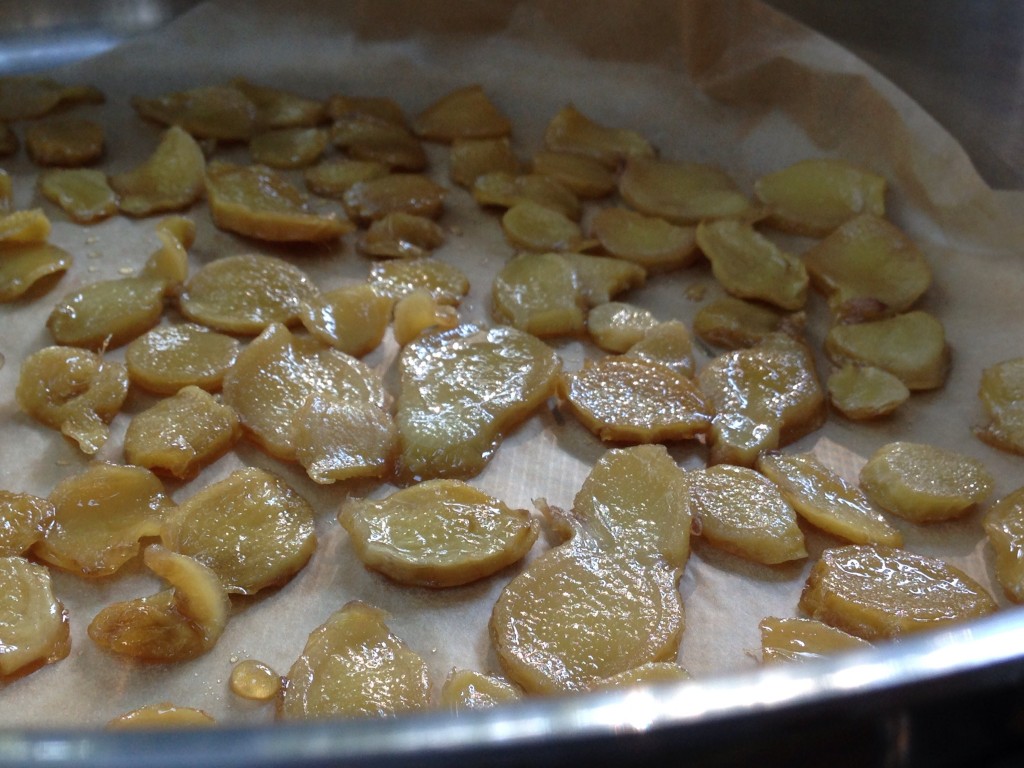
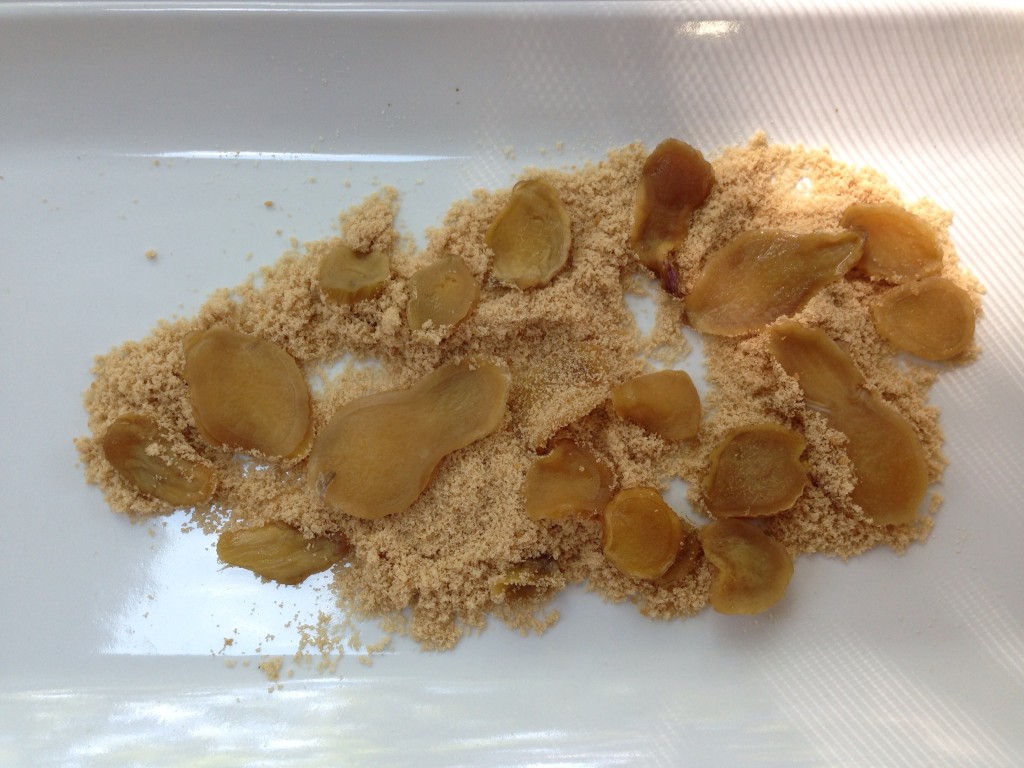
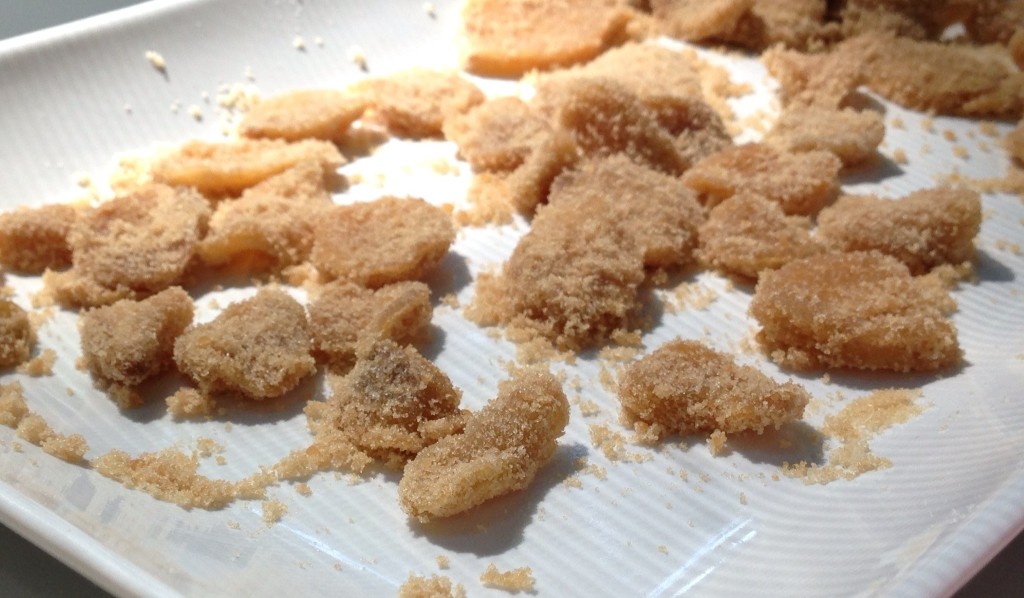









I’m curious about the texture. All the other recipes I’ve read talk about hours and hours of cooking, and including water in the recipe as well for the long cooking time. I can’t imagine how 20 minutes is going to produce a tender ginger slice. How tender are they your way?
The texture will not be soft like you are used to from the store. It will also be quite a bit more spicy because we are not diluting the flavor with water. The maple syrup will also be infused and can be stored in the refrigerator and used in recipes or on pancakes and waffles for more flavor. If you want to create a softer texture, turn the temperature down to a gentle simmer and cook for about the same amount of time. It’s still going to be spicy and not as tender as commercial. I store this in sugar in the fridge. This wasn’t meant to replace that soft sugary ginger, but instead to create something different that I could use in recipes throughout the year.